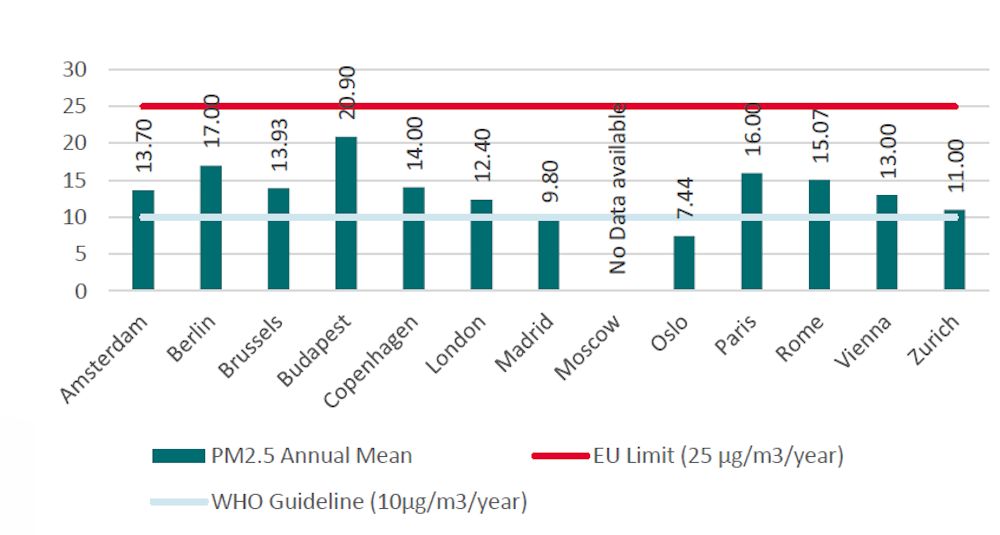
Amsterdam scores well on sustainable transport
Amsterdam is Europe's most sustainable city after Copenhagen when it comes to transport. The capital owes that position above all to the high proportion of cyclists and pedestrians in its transport mix. However, for public transport the city actually gets the lowest score.
The rankings were created by the German Wuppertal Institut, which was commissioned by Greenpeace to survey thirteen European capitals to find out how sustainable their transport is. The survey looked at the modes of transport used (walking, cycling, public transport or car), traffic safety and smart mobility. The researchers used existing data and interviewed the traffic and transport departments of the municipalities concerned.
The effect of electric transport has not been included in the analysis: its proportion in transport overall is still much too small. Of the 14 million new cars that were sold in the EU in 2017, 200,000 were fully electric.
A city for cycling and walking
Cycling and walking was expressed as the number of people who use these modes of transport in the city. For public transport, the survey also looked at affordability and the distribution of stations and stops. Zürich scored highest for public transport and Amsterdam lowest. The latter city has one of the lowest figures for car use. This is simply because many people in Amsterdam cycle or walk – two areas where the city is head and shoulders above the rest.

Scooters are getting in the way
With regard to traffic safety, the survey looked at the most vulnerable road users – cyclists and pedestrians. The researchers included both the number of fatal accidents per year and the number of collisions per million journeys made by cyclists and pedestrians.

Amsterdam, Copenhagen and Oslo scored well. In Amsterdam, the extensive network of separate cycle paths benefits road safety. The report does point out the explosive growth in the use of scooters (from 8000 in 2007 to 35,000 in 2016), which is making cycling less safe.
Air quality insufficient
For air quality, the researchers looked at nitrogen oxides and particulates along the key transport arteries in each city. Oslo is the only city where the air quality is fully compliant with EU limits and the guidelines of the World Health Organization (WHO). Amsterdam is in the middle.

The emissions of nitrogen oxides are below the EU limit in Amsterdam, with the exception of Haarlemmerweg, Jan van Galenstraat and A10-West. In terms of particulates, the city is clearly above the norm.
High parking charges keep cars away
The researchers take the term ‘smart mobility’ to mean the presence of environmental zones, prevention of congestion, shared transport, apps for public transport, etc. Copenhagen scores best here and Amsterdam is third. That position is largely due to the relatively small amount of congestion (time spent in queues is 22% of the journey time) and the high parking charges. In terms of accessibility of public transport through apps, there is a clear shortfall.
The Wuppertal Institut states that the research shows above all how capital cities score relative to each other and the key areas where they could improve their scores. This can be done by learning from the best practices in other cities.
If you found this article interesting, subscribe for free to our weekly newsletter!
Opening picture: underpass at Amsterdam Central Station. Photo: Benjamin Stephan / CC BY-ND 2.0 / Flickr







